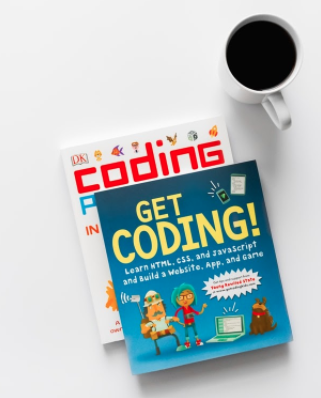
Characterization Through Coding

Overview
Students will apply their knowledge of characterization by coding a sample character’s thoughts, actions, and words.
Note: Lesson credit to Google CS First Curriculum.
Learning Objectives
Students will:
- Be able to demonstrate the understanding of characterization by coding a character's thoughts, actions, and words.
Vocabulary
Vocabulary Words:
- Event: Use event blocks (like “when flag clicked”) to trigger a series of codes.
- Sequence: Sequence at least 3 “say” blocks to start their story (by selecting a character).
- Motion Block: Use motion blocks (like “glide to X Y“) to personalize their story.
- Wait Blocks: Use wait blocks to construct a dialogue between two sprites.
Pre-planning
To prepare for this lesson:
- Review the Characterization Lesson Plan from Google.
- Set up a computer access plan (students could work with a partner).
- Ensure sound works for the video.
- Share the activity link http://g.co/csfirst/characterization.
- Determine if you want students to have Scratch accounts to save their work and more easily share it for feedback
Accommodations
See Accommodations Page and Charts on the 21things4students.net site in the Teacher Resources.
Steps
Directions for this activity:
- Watch together as a class the two introductory videos in the CS First Lesson about characterization and coding.
- Have students imagine why their character doesn’t have their assignment finished and what they might do to solve the problem. Have them brainstorm a list of possibilities:
- Feelings
- Thoughts
- Actions
- Open Scratch (sign-in recommended).
- Watch video tutorials and then follow the directions to continue adding elements to your character
- Take the Survey (from CS First lesson).
- Have students write a short story to go along with their coding project.
- Students can type a short story and a link to their animation in a shared Google Slide Deck.
- Create the Google Slide deck and share with the students.
- Create the Google Slide deck and share with the students.
- Allow students to view each other's work and answer questions:
- How would you describe the character?
- Give three adjectives to describe.
Assessment Options
Different options for assessing the students:
- Observations
- Check for understanding
-
Create a rubric based on the coding requirements and the elements of a character.
MITECS COMPETENCIES & ISTE STANDARDS
MITECS: Michigan adopted the "ISTE Standards for Students" called MITECS (Michigan Integrated Technology Competencies for Students) in 2018.
Empowered Learner
1c. Students use technology to seek feedback that informs and improves their practice and to demonstrate their learning in a variety of ways.
Computational Thinker
5d. Students understand how automation works and use algorithmic thinking to develop a sequence of steps to create and test automated solutions.
Creative Communicator
6d. Students publish or present content that customizes the message and medium for their intended audiences.
Devices and Resources
Device: PC, Chromebook, Mac, iPad
Browser: Chrome, Safari, Firefox, Edge, ALL
Apps. Extensions, Add-ons
Websites:
Scratch Project
CONTENT AREA RESOURCES
ELA
Explore the concept of character traits and feelings.
Social Studies
Code a character from history you have been learning about. Show his/her thoughts and actions in a given situation
Credits
This task card was created by Kaelyn Bullock, Melvindale-Northern Allen Park, March 2020.


